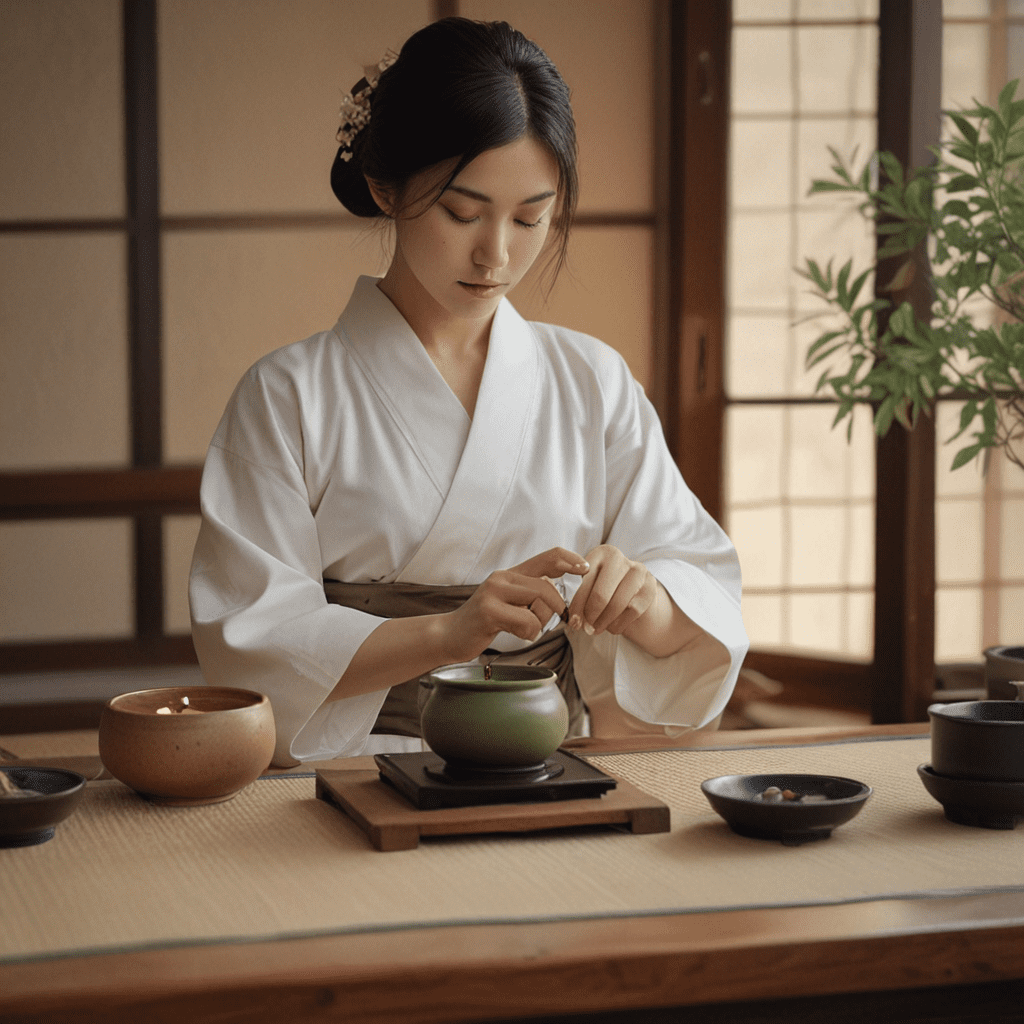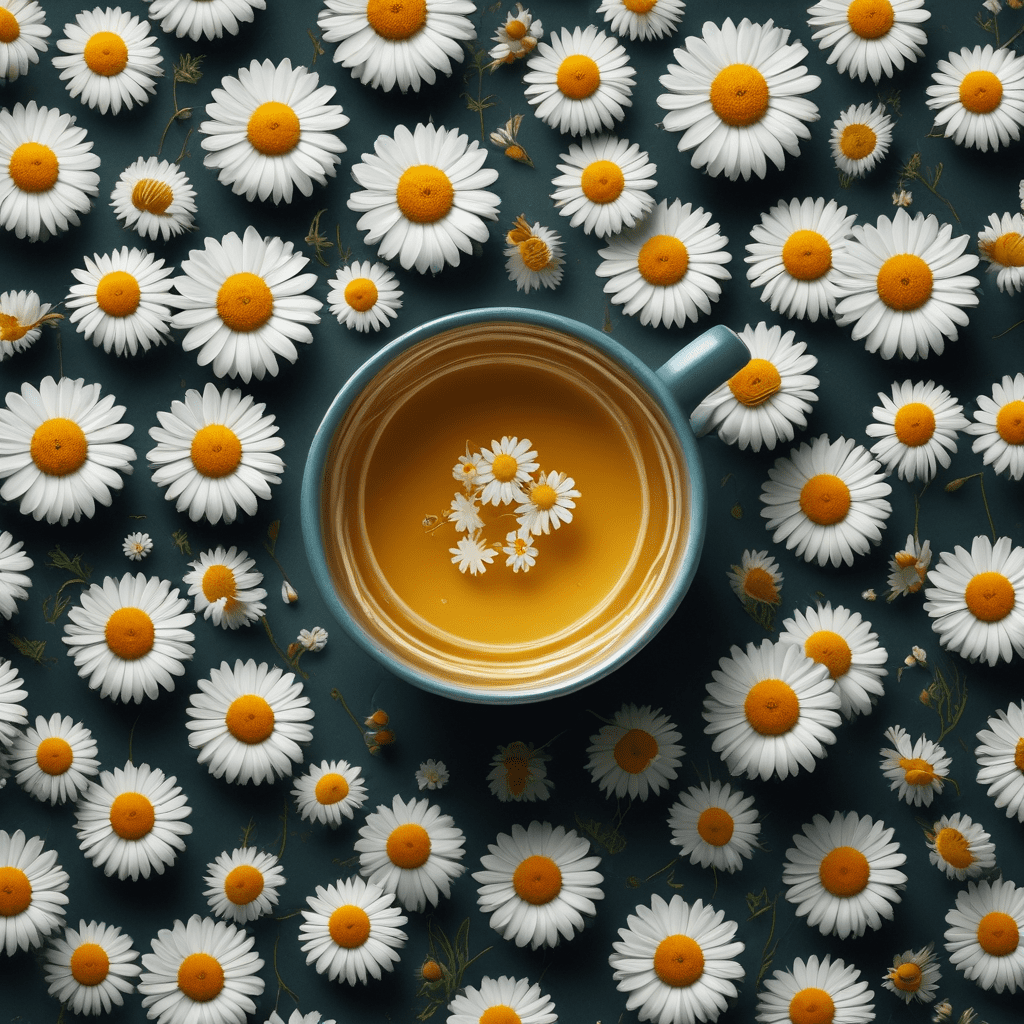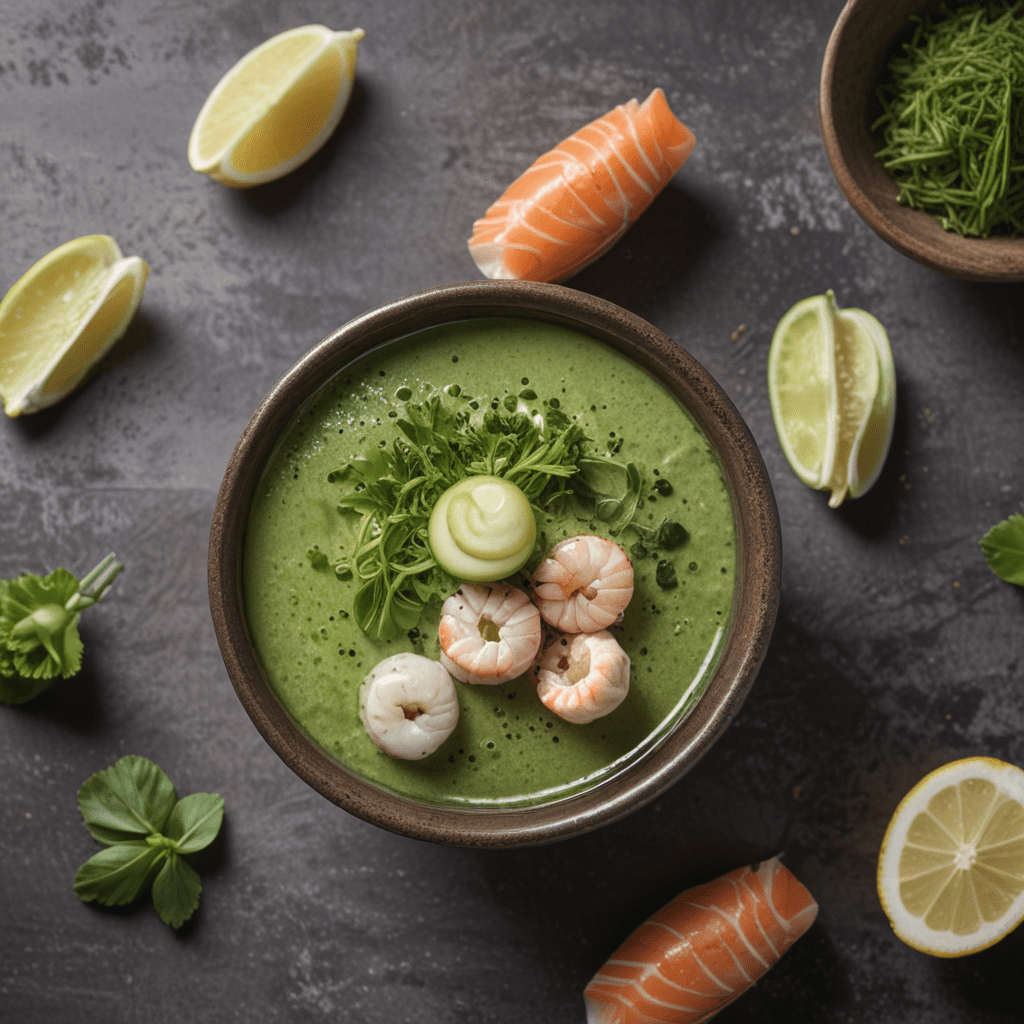
1. Introduction
The Japanese tea ceremony, known as chanoyu or chadō, is a cultural practice steeped in tradition and symbolism. Originating centuries ago, this ritual has evolved into an integral part of Japanese culture, embodying principles of harmony, tranquility, and mindfulness. In today's fast-paced society, the Japanese tea ceremony continues to captivate individuals seeking moments of respite and spiritual reflection. Through its unique blend of aesthetic rituals and philosophical undertones, it offers a path towards inner peace and a deeper appreciation for the present moment.
2. Historical Origins of the Japanese Tea Ceremony
The roots of the Japanese tea ceremony can be traced back to the 9th century when Buddhist monks traveling to China introduced the custom of serving tea as a way to promote relaxation and meditation. By the 16th century, the tea ceremony had evolved into an elaborate form of entertainment, enjoyed by the samurai class as a means to cultivate self-discipline and foster bonds. Over the centuries, various tea masters refined the ceremony's principles, techniques, and etiquette, shaping it into the multifaceted experience we witness today.
3. The Philosophy Behind the Tea Ceremony
At its core, the Japanese tea ceremony embodies several key philosophical concepts:
a. Wabi-sabi:
Wabi-sabi encompasses an aesthetic perspective that celebrates the beauty in imperfections, simplicity, and impermanence. The tea ceremony reflects this philosophy through its use of rustic tea utensils and humble settings, encouraging participants to embrace a mindset of acceptance and appreciation for life's transient nature.
b. Ichigo-ichie:
Ichigo-ichie translates to "one time, one meeting." This concept emphasizes the uniqueness and preciousness of each encounter. In the context of the tea ceremony, it reminds participants to be fully present and attentive, cherishing the fleeting moment shared with others during the ritual.
4. The Essential Elements of the Tea Ceremony
a. Tea Utensils:
Tea utensils hold profound significance in the Japanese tea ceremony, each piece carefully selected for its aesthetic value, symbolic meaning, and functional utility. These utensils include tea bowls and whisks made of various materials such as ceramics, bamboo, or lacquer ware, representing different facets of the ceremony's philosophy.
b. Tea Preparation Rituals:
The process of tea preparation in the ceremony is highly ritualized and follows intricate steps. Each movement, from measuring the tea leaves to whisking them, is guided by precise etiquette, creating a harmonious flow that emphasizes the importance of mindful attention to detail.
c. Tea Garden Elements:
The tea ceremony often takes place in a tea garden, designed to foster tranquility and contemplation. Elements such as stone lanterns, stepping stones, and carefully arranged rocks create a serene atmosphere that complements the meditative spirit of the ritual.
6. The Spiritual and Meditative Aspects of the Tea Ceremony
a. Mindfulness and Concentration:
The tea ceremony cultivates mindfulness and concentration by requiring participants to focus completely on the present moment. Each step of the ritual, from preparing the tea to appreciating its flavor, demands full attention, allowing individuals to shed distractions and cultivate a heightened awareness of their surroundings.
b. Purification Rituals:
Purification plays a significant role in the tea ceremony, both physically and spiritually. The tea utensils are meticulously cleaned before and after use, symbolizing a cleansing of the mind and body. The act of drinking tea is also believed to have purifying qualities, helping to dispel negative emotions and promote inner peace.
7. The Role of the Tea Master and Tea Etiquette
a. Qualifications of a Tea Master:
Becoming a tea master requires extensive training and dedication. Tea masters must possess a deep understanding of the philosophy, history, and techniques of the tea ceremony. They are also responsible for guiding participants through the ritual, ensuring a harmonious and authentic experience.
b. Tea Etiquette Rules:
The tea ceremony adheres to a strict set of etiquette rules that govern every aspect of the ritual. These rules promote respect, humility, and mindfulness among participants. Proper posture, gestures, and attire are all meticulously observed, contributing to the overall ambiance of tranquility and serenity.
8. Variations in Tea Ceremony Styles
There are several different schools of tea ceremony in Japan, each with its own unique style and emphasis. Some of the most prominent schools include:
a. Omotesenke School:
The Omotesenke school is known for its refined and elegant approach to the tea ceremony, emphasizing the importance of wabi-sabi principles. It is the oldest and most traditional of the major tea ceremony schools.
b. Urasenke School:
The Urasenke school is the largest and most widespread tea ceremony school in Japan. It is characterized by its focus on hospitality and a more relaxed atmosphere, while still maintaining the core principles of the tea ceremony.
c. Other Schools:
Other notable tea ceremony schools include the Mushanokoji-Senke school, the Enshu school, and the Kankyū school, each with its own distinct aesthetic and philosophical perspectives.
9. The Significance of the Japanese Tea Ceremony in Modern Society
In contemporary Japan, the tea ceremony continues to flourish as a cultural practice cherished by people from all walks of life. It offers a sanctuary amidst the hustle and bustle of modern society, providing individuals with opportunities for relaxation, reflection, and spiritual growth. The tea ceremony has also gained international recognition, with tea enthusiasts worldwide eager to experience its unique blend of aesthetics and philosophy.
10. Conclusion
The Japanese tea ceremony is a multifaceted cultural practice that embodies the essence of Japanese tradition and spirituality. Through its meticulous rituals, refined aesthetics, and philosophical underpinnings, it offers a transformative experience that cultivates mindfulness, promotes tranquility, and fosters a deep appreciation for the present moment. As a living cultural heritage, the tea ceremony continues to inspire and captivate individuals seeking a meaningful connection to their inner selves and the world around them.
FAQ
Q: What is the purpose of the tea ceremony?
A: The tea ceremony is a ritualized form of tea preparation and consumption that emphasizes mindfulness, harmony, and spiritual growth.
Q: What are the core philosophical principles of the tea ceremony?
A: The tea ceremony is guided by the principles of wabi-sabi (beauty in imperfection) and ichigo-ichie (the uniqueness of each encounter).
Q: What are the essential elements of the tea ceremony?
A: The tea ceremony involves the use of specialized tea utensils, the preparation of matcha tea, and the creation of a serene tea garden atmosphere.
Q: What is the role of the tea master in the ceremony?
A: The tea master is responsible for guiding participants through the ceremony, ensuring its smooth flow and adherence to etiquette.
Q: Are there different styles of tea ceremony?
A: Yes, there are several different schools of tea ceremony in Japan, each with its own unique style and emphasis.


